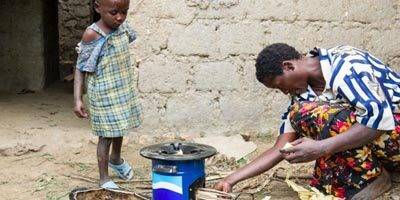World Immunization Week, promoting vaccines as powerful tools for protecting people against some of the most deadly diseases. However, there are no effective vaccines for many of what are called “Neglected Tropical Diseases” – NTDs. And where there are few vaccines and treatments available, people remain trapped in a cycle of poverty and disease.
NTDs include seventeen parasitic, bacterial and viral infections that infect more than a billion people across the world. They include diseases such as leprosy, lymphatic filariasis, leishmaniasis, Chagas disease, dengue and sleeping sickness. Despite the name ‘tropical’ the NTDs thrive far beyond the tropics and represent a great health burden worldwide. These preventable “diseases of poverty” primarily affect the world’s poorest people and can cause severe lifelong disabilities such as blindness, deformities, and debilitation. However, the devastating impact of these diseases is often overshadowed by the “big three” – HIV, tuberculosis and malaria – leaving them neglected in discussions of global health, investment, and research.
 “Velayuthan pillai (Age 69), a tailor. Elephantiasis turned his life into misery by taking away both his legs. Having lost his legs and job, he returned back to his home town and joined as a guard for a temple for the pay of (Rupess 800) 17.60$ per month. With the help of this little income he’s struggling to make both ends in life along with his wife.” Photo by Rajvinoth Jothineelakandan.
“Velayuthan pillai (Age 69), a tailor. Elephantiasis turned his life into misery by taking away both his legs. Having lost his legs and job, he returned back to his home town and joined as a guard for a temple for the pay of (Rupess 800) 17.60$ per month. With the help of this little income he’s struggling to make both ends in life along with his wife.” Photo by Rajvinoth Jothineelakandan.
The human cost
Lymphatic filariasis, commonly known as elephantiasis, is caused by a parasite transmitted to humans by mosquitoes. The infection causes profound damage to the lymphatic system, creating severe swelling in the limbs and scrotal areas. It disfigures and often permanently disables those infected. According to the WHO, today 120 million people are infected, and some 40 million are incapacitated by the disease.
Leishmaniasis, a disease caused by a small parasite, infects some 12 million people. The parasite causes skin ulcers and destroys areas such as nose and the mouth. If left untreated, the infection causes damage to internal organs and, ultimately, death. Another parasitic disease, schistosomiasis (“hookworms”), can cause severe anemia and stunted growth in children. It infects about 210 million people worldwide and kills 200,000.
Dengue fever, a viral disease carried by mosquitoes, can progress into a hemorrhagic fever, which causes blood plasma to leak from the vessels in the body, and subsequently, death. Dengue is endemic in nearly 100 countries in the world. With climate change, the incidence of dengue has increased some 30 times, and today 50-100 million infections are seen every year.
Infection by NTDs have been shown by studies to weaken the immune systems of individuals and lead to increased susceptibility to other infections, such as HIV, creating a breeding ground for epidemics in vulnerable areas.
In addition to the devastating health effects of these diseases, the social stigma associated with NTDs such as leprosy leads to individuals being outcast, and hinders eradication efforts. Parasitic worms reduce children’s ability to learn. The physical disabilities, psychological suffering, social stigma and economic loss associated with NTDs can paralyze entire communities.
Diseases of poverty

Immunizations and oral polio vaccinations given to infants at Dowa District Hospital in Dowa, Malawi. Photo by Barbara Kinney, Gates Foundation.
Living in high-poverty areas, malnutrition, urbanization and deforestation are primary risk factors (for these diseases). Poverty can cause and exacerbate NTDs directly and indirectly, through poor infrastructure. For example, unsafe drinking water and lack of access to sanitation can promote parasitic infections. More directly, lack of affordable health care and treatment exacerbates these diseases. For this reason, the United Nation secretary general Ban Ki-Moon highlighted that “poverty reduction and the elimination of NTDs go hand-in-hand.”
The NTDs trap individuals and communities in a cycle of poverty, as the serious disabilities associated with these diseases can prevent individuals from working. For example, people infected with lympatic filariasis lost about one fifth of their work time, according to a study in India.
James Maskalyk, author and physician, highlighted this vicious cycle: “A man bitten by vinchuca [which causes Chagas disease] gets sick, family spends its money on ineffective treatment and he dies, the farm goes fallow, banana production falls, Bolivia’s economy suffers, less chance of treatment for his neighbor. And bananas are more expensive. Perhaps those who are not moved by a grieving family on the wrong side of a swollen and muddy river can be swayed by the promise of cheaper bananas.”
Prevention and treatment options
Given the diversity of the diseases, prevention and treatment options vary. For hookworms, administering deworming pills to children during mass immunization campaigns can protect them from intestinal worms, and strengthen their immune systems making other interventions more effective. Risk of mosquito-borne infections can be reduced by using mosquito nets treated with insecticides.
For most NTDs, however, prevention and treatment options are limited, outdated and often inaccessible to the most vulnerable populations. For example, there are no vaccines for leishmaniasis, and the treatment is expensive, largely ineffective and toxic.
The lack of interest by wealthy countries and multinational pharmaceuticals creates what the Drugs for Neglected Diseases Initiative (DNDi) calls “a fatal imbalance” in research and development. Of the 1,535 drugs developed between 1975 and 2004, only 21 were for neglected tropical diseases. Most were developed to treat animals. Of 150,000 clinical trials for new drug development in 2011, only 1% were targeted to the NTDs affecting one billion of the world’s poor.
Fighting NTDs is a challenge, but even a modest investment could lift millions of people out of poverty and disease. Such investment is nowhere to be seen.



